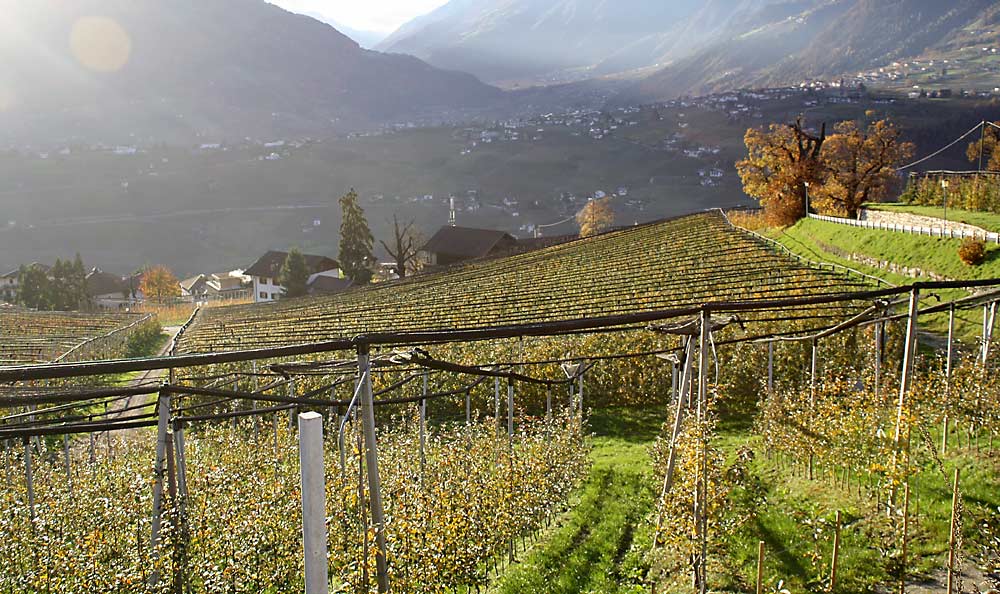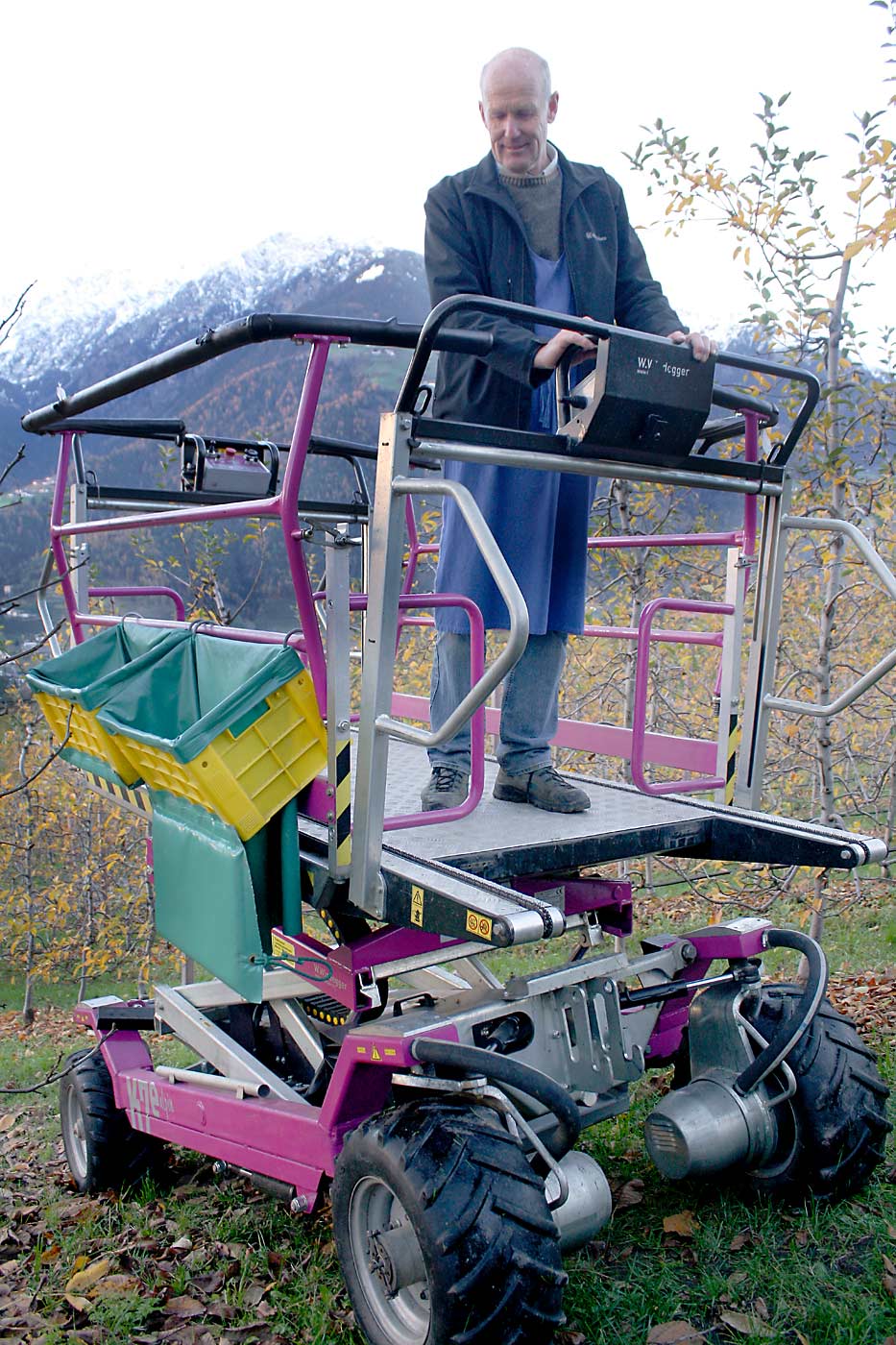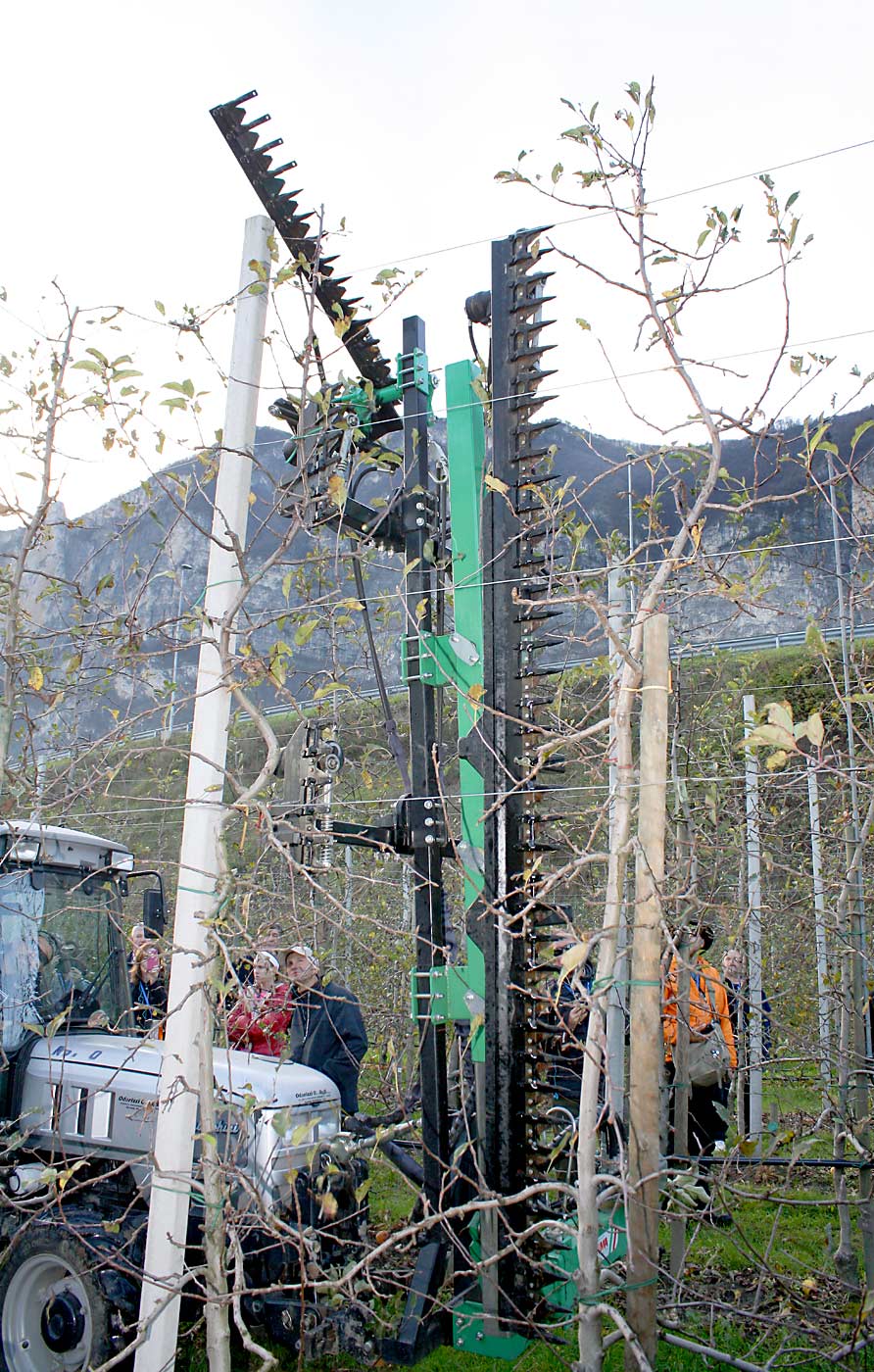
Facing rising labor, energy and transport costs, Italian fruit growers seek to mechanize as much as possible by redesigning their orchards, in an endless search for efficiency and precision.
“Mechanization is really becoming more and more important, even in high-quality crops where you are looking for the fresh market,” said Luca Corelli-Grappadelli, a physiologist with Italy’s University of Bologna. “We’re moving away from orchard designs that cannot be coupled to mechanization.”
Corelli-Grappadelli gave the opening lecture of the International Fruit Tree Association’s 63rd annual conference in Grand Rapids, Michigan, in February, where he described current trends in Italian orchard design and management.
Growers in Italy have been experimenting with modern techniques and orchard designs for some time now; such innovations were the focus of an IFTA tour in 2014 and another scheduled for this November. Growers pulled out older, low-density systems in favor of modern high-density orchards. Now they are phasing out three-dimensional canopies and narrowing rows, seeking to simplify tree structure.
“Trees are getting simpler and simpler and simpler,” Corelli-Grappadelli said.
He shared some of the promising technologies being used for precision orchard management in Italy, such as drones and platforms. Growers want machines with sensors and implements that can perform easy tasks. Platforms are especially popular, with newer machines powered by electrical propulsion. Hail netting is standard and now doubles as protection against insects and other threats.

Italian growers avoided mechanical pruners for a long time, because they didn’t like the way they made the trees look. But in recent years, stone fruit growers especially have come around to mechanical pruning, due to cost considerations and changes in pruning strategies.
The rules of training and pruning are changing, too, with new strategies geared to vigor control, high-quality fruit and high yields. Growers want to train and prune “with as few cuts as they can,” he said. They don’t want to touch an apple tree for the first three years, until cropping is established, in order to avoid promoting regrowth.
Another emerging tool, mechanized leaf removal, improves light penetration for orchards that need it. Italian growers, especially peach growers in the country’s agricultural heartland known as the Po Valley, also lean on the Darwin string thinner for blossom thinning. And the innovations continue: One grower recently adapted a grape harvester so it could harvest juicing apricots, he said.
As for the future, Corelli-Grappadelli said Italian researchers plan orchard designs that will consume half the water and electricity of current orchards.
Apples are still Italy’s main fruit crop, followed by peaches and pears. Peaches, after suffering from extremely low market prices for a while, are starting to become profitable again. Prices for apricots and plums have gone up, and walnuts and hazelnuts also are growing in popularity, he said.
Italian growers plant more new and early bearing varieties now, in hopes of capturing new markets. The loss of international markets, especially Russia several years ago, created a challenge. Italy’s pome and stone fruit industries still feel the loss of those sales. Italian apples compete with Polish apples for other foreign markets, and Italian pears compete with Dutch and Belgian pears, he said.

European Union food safety and environmental policies are strict. Italian growers seem to be losing crop protection chemicals by the year. At the same time, new and more difficult pests, such as the brown marmorated stink bug, cause great damage to fruit crops, and farmers have limited tools with which to combat them. In the case of BMSB, they recently won a victory when they were given permission to release a parasitic wasp, a natural enemy of BMSB, to help reduce the stink bug’s impact, he said.
As for disease challenges, pear decline has always been a problem for Italian growers. Replant diseases are common, too. Growers tend to renew orchards at a high rate and to replant the same varieties over and over. Corelli-Grappadelli would like to see them change that tendency. Current replant disease solutions include planting resistant rootstocks, changing soil in the row (especially in apple rows) or, in peach country, a more radical “soil exchange” method, he said.
Many of these innovative approaches, from site preparation to systems design, will be featured on the IFTA’s Italy 2020 tour scheduled for November. The trip includes orchard visits in Ferrara, Vicenza and Trento.
—by Matt Milkovich






Leave A Comment